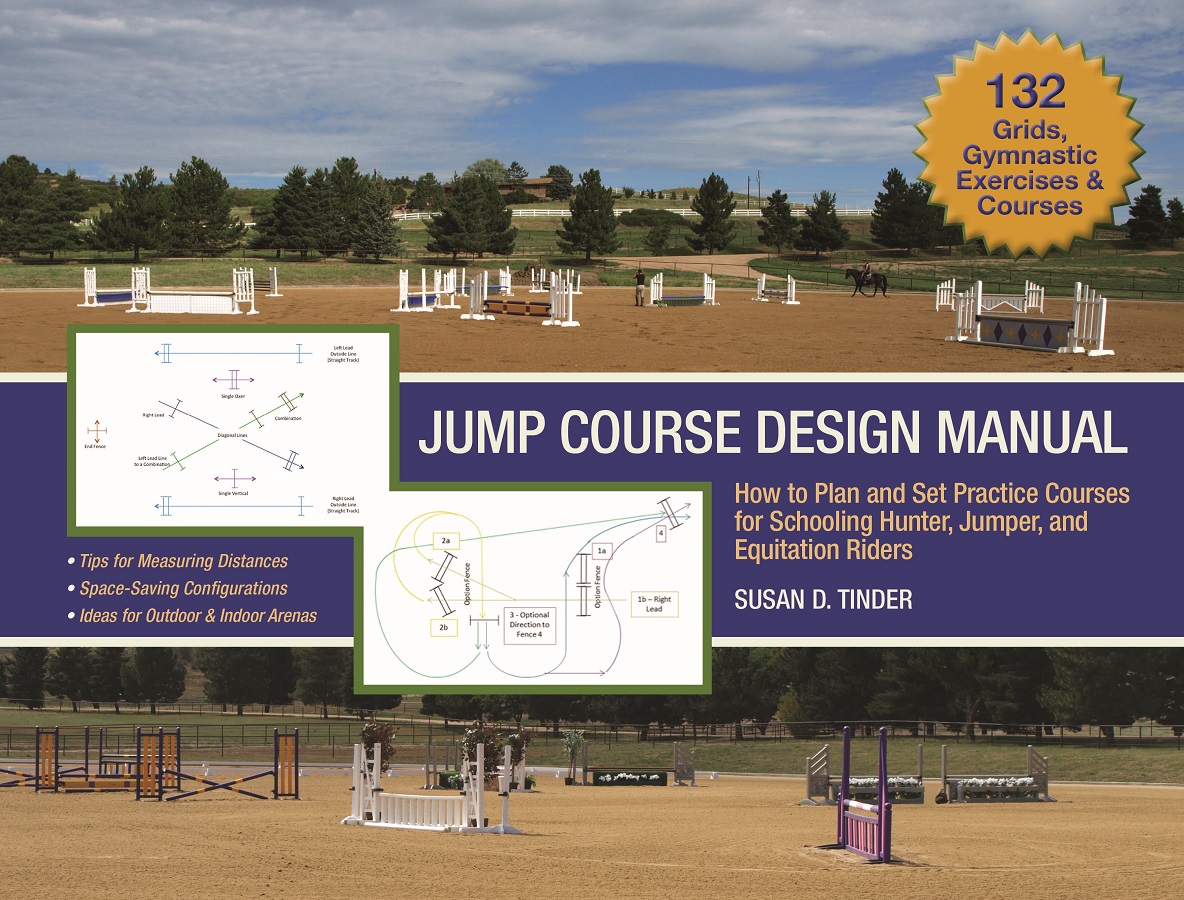This excerpt from Jump Course Design Manual by Susan Tinder is reprinted with permission from Trafalgar Square Books (www.horseandriderbooks.com).
In this excerpt from the Jump Course Design Manual by hunter rider Susan Tinder, we see our way clear with lines and combinations, and learn the trick to setting them square at home so we can nail them in competition.
A line of jumps consists of two or more fences that are related to each other through a specified distance greater than three strides. Lines can be straight, diagonal, bending, or broken, and they can be placed anywhere within the confines of the arena as long as there is adequate room for a safe approach and landing. A straight or diagonal line indicates the rider will jump the fences center to center on either a straight or diagonal track. The fences in a bending line are also jumped center to center, but the track has a curvature to it that allows the horse to stay on the same lead for the entire line. A broken line is also curved, but the arc of the track running to the succeeding jump is on the counter lead.

Photo by Susan Tinder
Combinations are two or more jumps that are related by fewer than three strides. A double combination has two related jumps and is sometimes referred to as an in-and-out. A triple combination has three related jumps that are set so that there are not more than three strides between any of the elements. It is not uncommon to have a line lead into, or out of, a combination.
You need to understand how to cross-measure for “straightness” for all course elements placed on a straight line or combination. When fences are not placed so they are square, you unintentionally create awkward angles to your track and make it difficult for the horse travel on a straight track over the center of the related jumps. It is often hard to see “squareness,” so you need to use a tape measure. A method called cross-measuring can be used to ensure the lines you plan on paper or set on your jump course are square.
First, measure the appropriate length of the line for the number of strides that you have planned for your course. You do this by measuring down the middle of the line, as well as from outside standard to outside standard and inside standard to inside standard.
Next, check to see that the line is square by measuring diagonally from the inside standard of the first jump across to the outside standard of the second jump, then from the outside standard of the first jump to the inside standard of the second jump. The two diagonal measurements need to be the same. When one of the diagonals measures longer than the other, push/rotate the corners of the outside standard of the side with the longer measurement toward the opposite inside standard until both the diagonal measurements are the same.
Here’s a tip: You need to rotate/move the standard by one-half the difference in measurement between the two diagonals. So, for example, when the difference in the measurement between the two diagonal lengths is 4 inches, you need to rotate the outside standard in by 2 inches to make the line square.

Pick up your copy of the Jump Course Design Manual from Trafalgar Square Books HERE!
